on
Verdure
- Get link
- X
- Other Apps
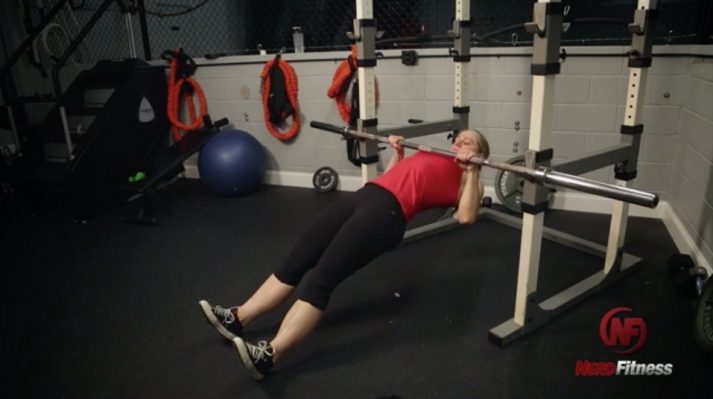
The Inverted Bodyweight Row is one of the BEST, simple, most effective exercises you can do for your “pull” muscles.
If you’re trying to get to your first pull-up, or even if you are already doing pull-ups, adding bodyweight rows to your workout routine is a great idea!
This is one of our favorite exercises to program for our Online Coaching Clients, and we use this exercise as a stepping stone to help people get their first pull-up!
When you do proper bodyweight rows, you build strength and muscle in your back, your biceps, your forearms, your grip, and even your core.
As part of our Strength 101 series, this guide will cover everything you need to know about this awesome exercise:
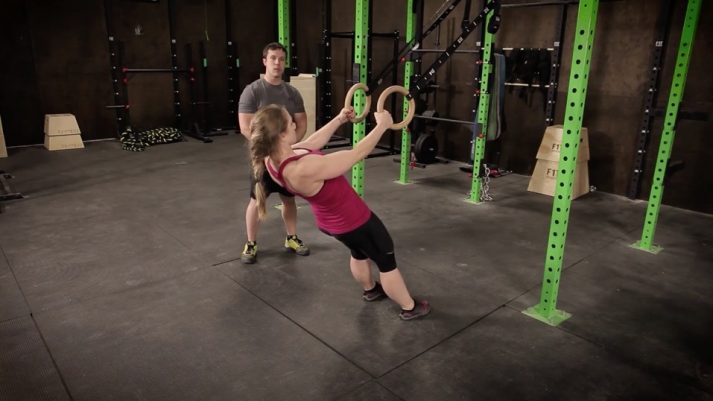
You’ve probably heard of the regular barbell row. You pick up a barbell, bend over at the waist (keeping your back straight), and pull the weight up towards your chest.
It looks something like this:
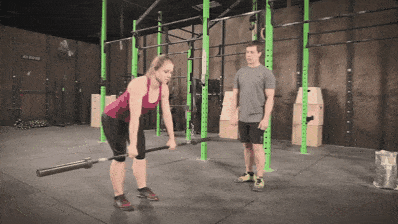
This can be a great exercise, but improper form could cause complications or you might not have access to a barbell and plates.
Luckily, the bodyweight row (or inverted row) takes care of all of that.
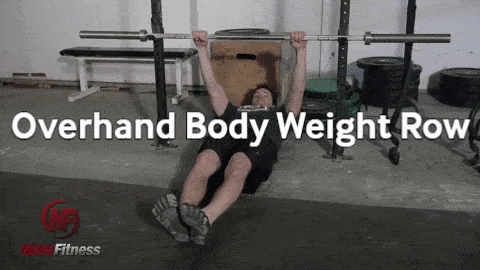
By the way, I’ll be using “bodyweight row” and “inverted row” interchangeably in this article.[1]
To-may-to, To-mah-to.[2]
When doing this movement, you only need a bar to lean back from and your body weight. There’s also no extra stress on your back, like with a traditional barbell row.
As an added bonus, you get a decent core workout too.
And there was much rejoicing.

Think of it like this: “bench press” is to “pushing” as “inverted row” is to “pulling.”
Balance FTW!
Why the inverted bodyweight row is so great:
I’m a huge fan of compound exercises (like the squat and deadlift, pull-ups and push-ups), and I’m also a huge fan of exercises that don’t require expensive machines or lots of extra bells and whistles.
An inverted row works all of your pull muscles:
If you’ve been doing bench presses regularly, start doing an equal amount of work with your pull muscles to stay in balance and away from injury.
Oh, and if you want to eventually be able to do pull-ups THIS is the exercise you need to add into your routine until you can do a full pull-up.
Speaking of which, if you are just getting started with bodyweight rows and want to one day do a pull-up, let us help!
We’ve created custom workout programs for men and women of all ages that have helped them get their first pull-up! And I want to help you get there too! Click in the box below to get the details:
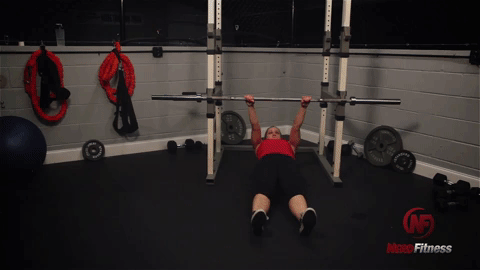
Let’s start with the people who have access to a gym (see a no-gym variation here):
How to do an inverted row or bodyweight row:
If this movement is TOO difficult, no big deal, we just need to back up a few steps.
Set the bar higher so that when you lean back, your body isn’t down on the ground; maybe it’s only at a 45-degree angle.
We’ll walk you through a row progression right here.
Here’s Staci again demonstrating it at a higher angle:
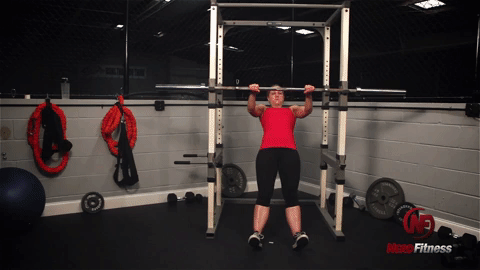
By setting the bar higher, it takes more of your body’s weight out of the equation.
As you get stronger (and/or lose weight), you’ll be able to drop the bar until you’re parallel when pulling yourself up.
I grabbed a video of Senior Coach Staci from Team NF demonstrating a bodyweight row with gymnastic rings, but the instruction you’ll get in the video will really be helpful too.
How to do a bodyweight row with explanation:
Here are some tips and tricks for doing a proper inverted bodyweight row:
Let’s provide a blueprint on how you can level up your inverted bodyweight rows.
#1) Doorway Rows
At first, just start doing some rows in your doorway:
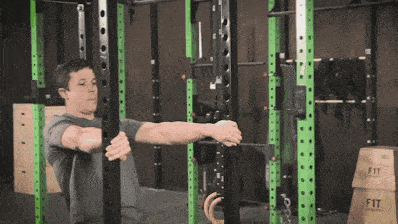
This will help you start training your “pull” muscles.
#2) Towel Rows
Still utilizing your doorway, you can use a towel to lean back even further to increase the challenge here:

Coach Jim walks you through setting up your towel row in this video, “No chin-up bar?? No problem! Five alternatives!!”
#3) Inverted Row (High)
Next, try doing an inverted row, but set the bar high so it’s easier to perform:

#4) Inverted Row (Low)
Once your inverted rows become easy, lower the bar to increase the challenge:

#5) Elevated Inverted Row
If you place your feet in the air, you’ll make this exercise even tougher:
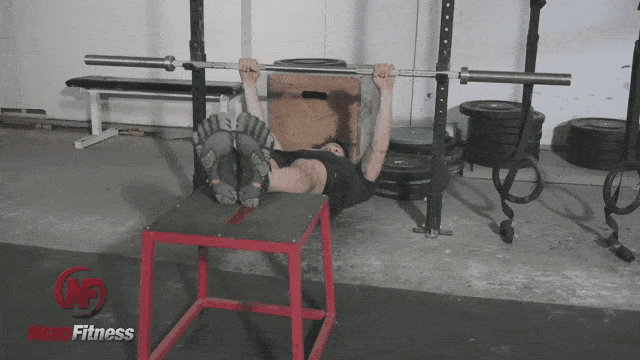
#6) Inverted Row (Weighted)
If you really want to up the difficulty of your inverted rows, try doing it with a little bit of weight attached to you:
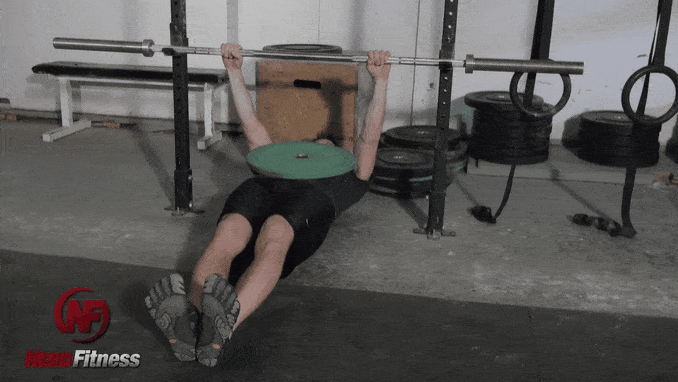

If you are building your own workout plan, you can mix Inverted Bodyweight Rows in wherever you normally do your pull exercises (pull-ups, pull-downs, rows, etc.).
When I go into a gym, my time is extremely limited, and I’m working towards developing strength.
Here’s a sample two day split for me:
Both days work my full body, I can do a full routine in less than 40 minutes, and I’m building strength.
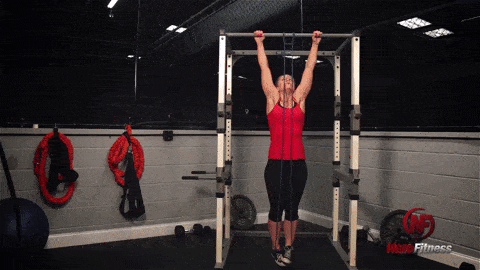
On the rows, aim for 3 sets of 10. We cover this in our “sets and reps” article, but you can never go wrong with 3 sets of 10!
If you can’t do that, do 3 sets to however many reps you can do, and build your way up to 3 sets of 10.
Once you can do that, put your feet up on a chair, throw some weights in a backpack, put it on reverse (so the bag is hanging in front of you), and then do the rows.
You got this!
Overwhelmed? I personally know how that feels. It can be scary embarking on a strength training practice for the first time.
Are you doing your moves correctly? Should you be lifting more weight or less? What do you eat to reach your goals?
We created the Nerd Fitness Coaching program to tackle these questions directly. Your own coach will get to know you, build a program based on your experience and goals, and check your form on each movement (via video):
Just because you don’t have access to a gym doesn’t mean you can’t work out your back, you just need to get VERY creative.
Here’s how you can do Inverted Bodyweight Rows at Home:
PATH ONE: Use your kitchen table. Or your desk. Be very careful with this one.
Lie underneath your table so your head and shoulder are sticking out above it.
Grab the table edge with an overhand grip, and pull yourself up (just like it’s explained above).
Warning, don’t pull the table over with you, and make sure you don’t break the thing!
PATH TWO: Get a really thick wooden dowel or pipe, something strong enough to support your weight. Lie it across two of your kitchen chairs, and then lie down underneath it.

Make sure it’s sturdy, and the bar isn’t going to break/move on ya, and pull yourself up.
Don’t forget, you want to stay in balance.
If you don’t have a pull-up bar and gymnastic rings, find a way to do some bodyweight rows whether it’s between two chairs or under a table.
You’re smart, get creative!
This should allow you to start mixing in bodyweight rows into your Strength Training Routine!
Any more questions about the inverted bodyweight row?
Leave em below!
-Steve
PS: Our certified NF instructors can build you a custom plan for your lifestyle and goals. Instead of worrying about what to do next, simply follow the workouts and nutrition your coach has programmed.
PPS: Be sure to check out the rest of the Strength Training 101 series:
You can also get the guide free when you sign up in the box below and join the Rebellion!
###
Comments
Post a Comment